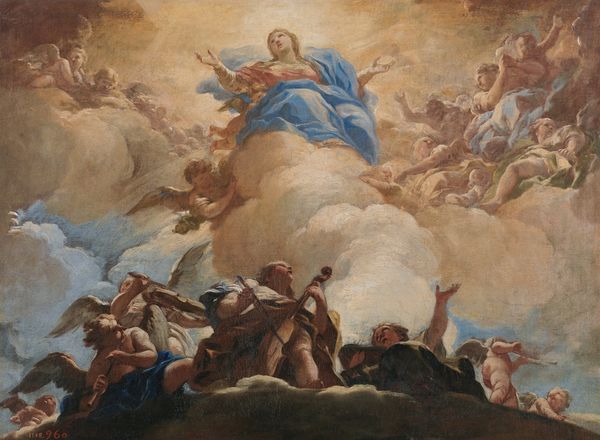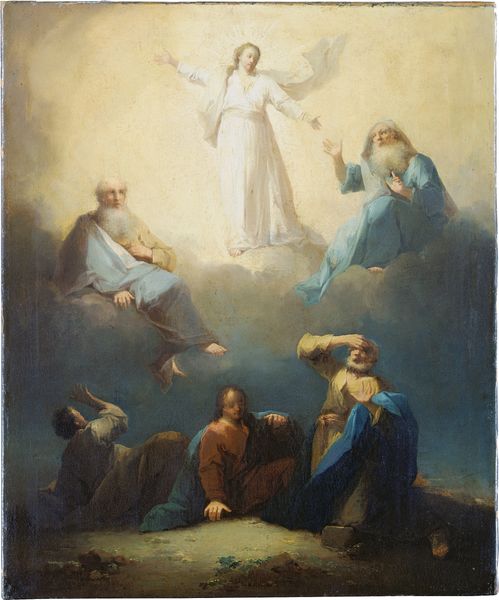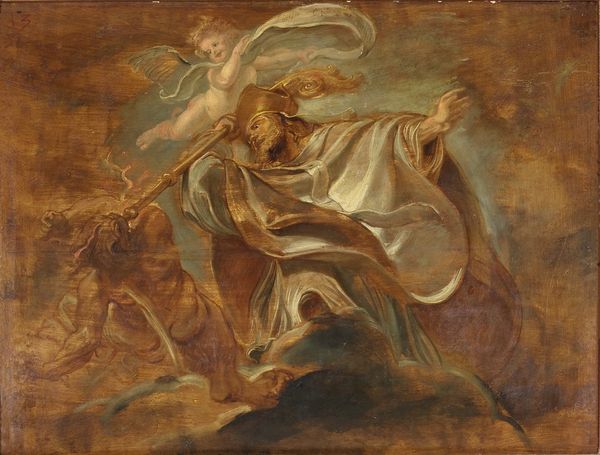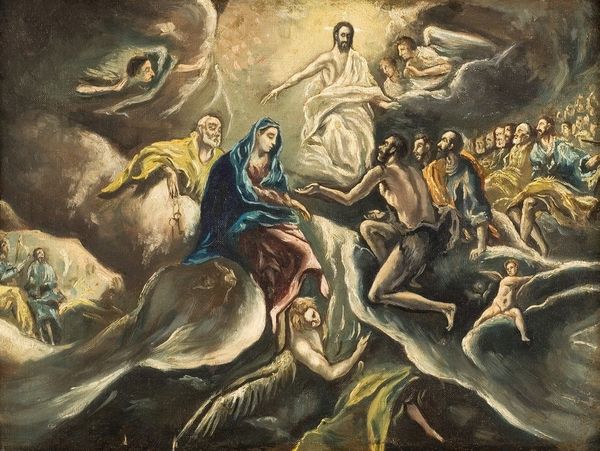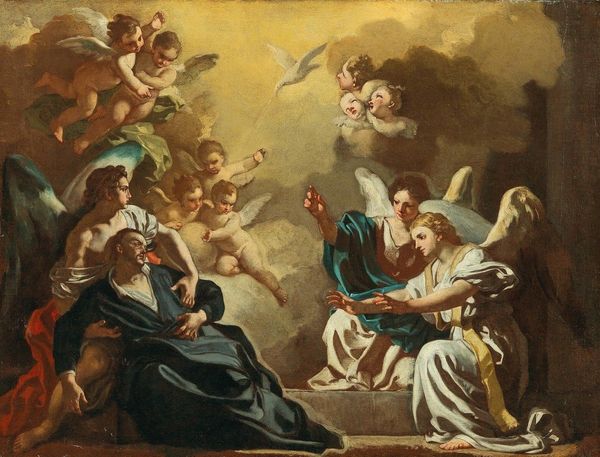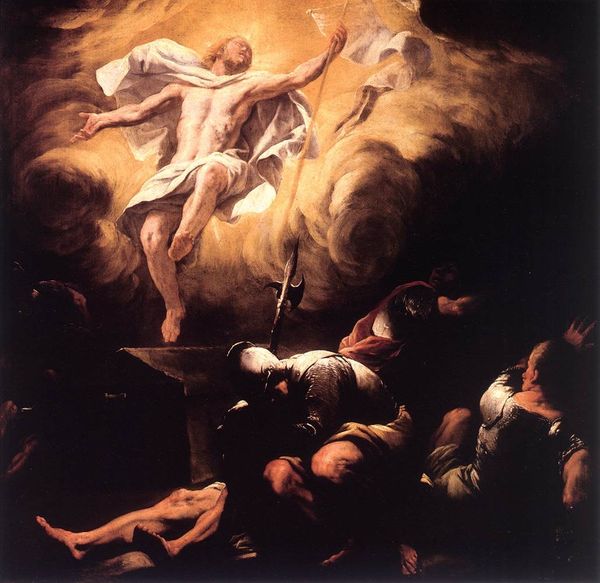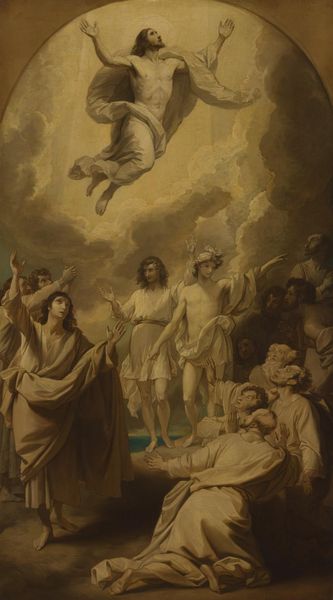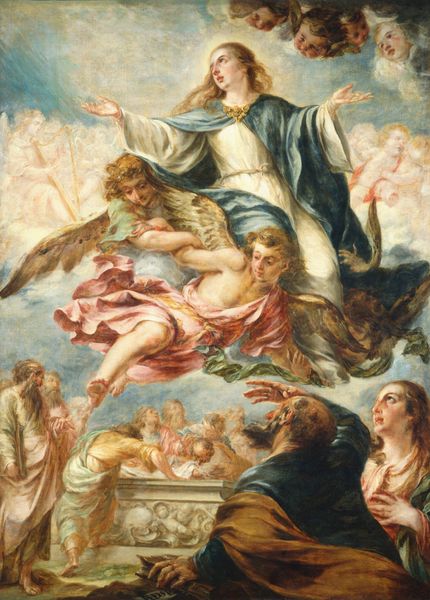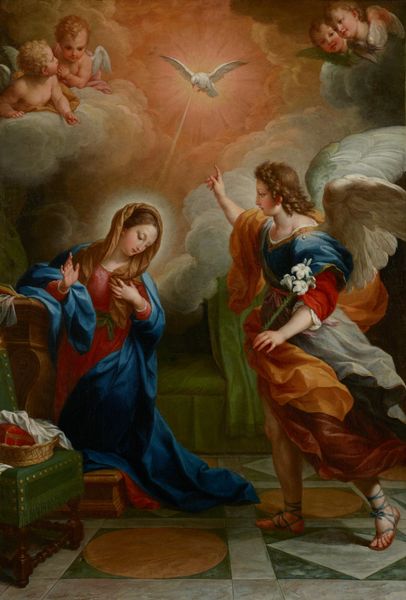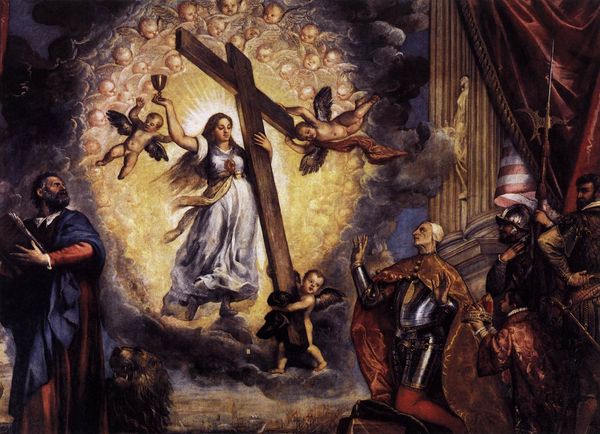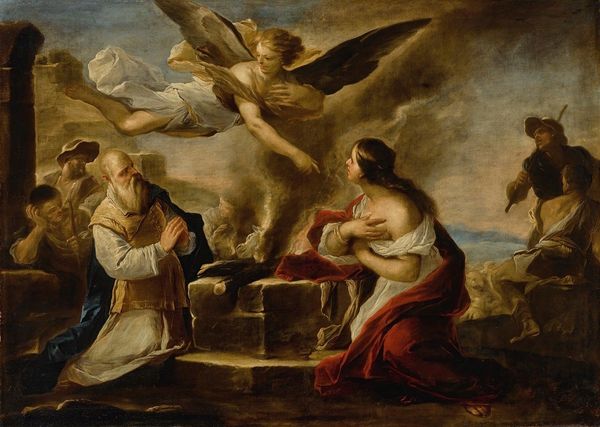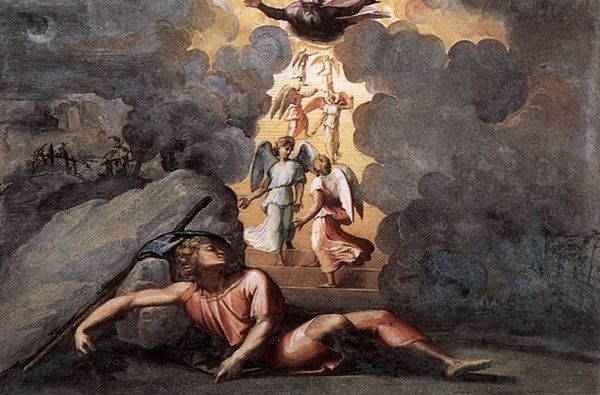
painting, oil-paint
#
portrait
#
allegory
#
narrative-art
#
baroque
#
painting
#
oil-paint
#
landscape
#
figuration
#
oil painting
#
history-painting
Dimensions: overall: 174.6 x 264.8 cm (68 3/4 x 104 1/4 in.) framed: 207 x 302.3 x 10.1 cm (81 1/2 x 119 x 4 in.)
Copyright: National Gallery of Art: CC0 1.0
Curator: This oil painting, dating from approximately 1740 to 1755, is titled "Elijah Taken Up in a Chariot of Fire" and is attributed to Giuseppe Angeli. It’s an arresting composition; what immediately strikes you? Editor: Well, besides the somewhat literal title, it’s the drama of the baroque that overwhelms—that churning light, the billowing fabrics, everything seems to reach out of the frame. The chromatic scale seems confined—almost entirely earth tones save that bleached white horse—making the implied fire less frightening and more... operatic? Curator: Precisely. The fiery chariot isn't just about heat, but divine power and transformation. The chariot and horses, recurrent images in mystical traditions, speak to a transcendence of the earthly plane. Elijah’s ascent wasn't just a departure, but a direct connection to the divine. It signifies hope and miraculous intervention. Editor: I can see how you might see a broader system of belief in this painting. From my view, the contrast between the two figures offers a strong central axis that unifies the divine miracle with earthly witness; Elijah sweeps upward and Elisha clings below in parallel forms of invocation and benediction, respectively. But isn’t it possible the artist used this composition simply because it’s compelling to the eye? Curator: Angeli certainly employs artifice and theatricality. Look at how the earthly landscape is rendered versus the tumultuous celestial realm—it signifies the contrast between the known and the unknowable. Elijah’s story resonated so powerfully precisely because it gave visual form to something deeply mysterious—a symbolic doorway, if you will, between worlds. Editor: Perhaps. But while the drama is evident, I’m curious about the cultural value of representing Biblical narrative in visual form—was this painting intended simply as a didactic token or as a form of something far more complex in cultural signification? Is there any way to decode it, to extract objective meaning from the work? Curator: Art, as a form of cultural expression, echoes across centuries. What endures are those symbols that address our universal questions—birth, death, and transformation—allowing it to constantly gain meaning each time we engage with it. Editor: Ultimately, this is a compelling image—one that benefits equally from a knowledge of historical and social narratives and a basic understanding of color and form.
Comments
No comments
Be the first to comment and join the conversation on the ultimate creative platform.
